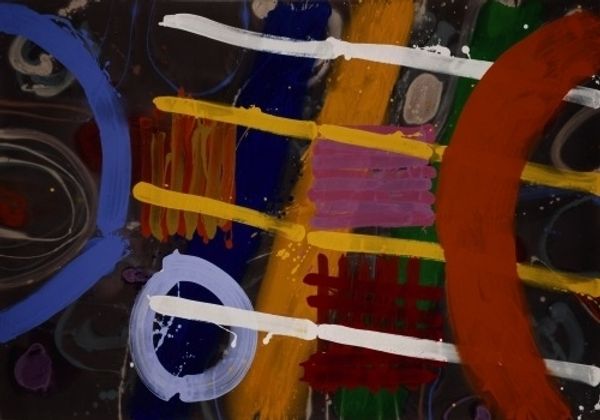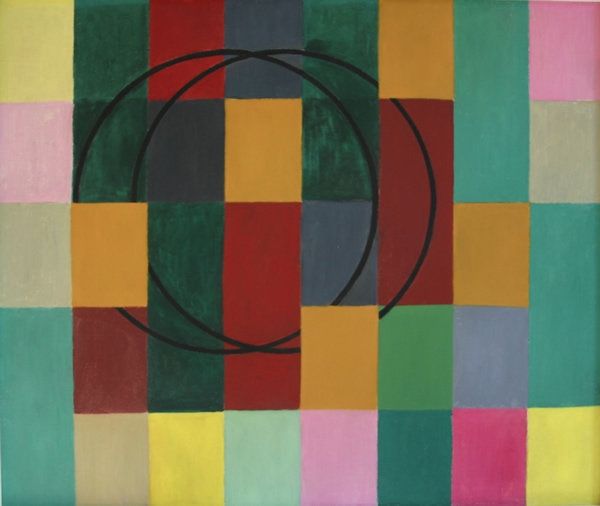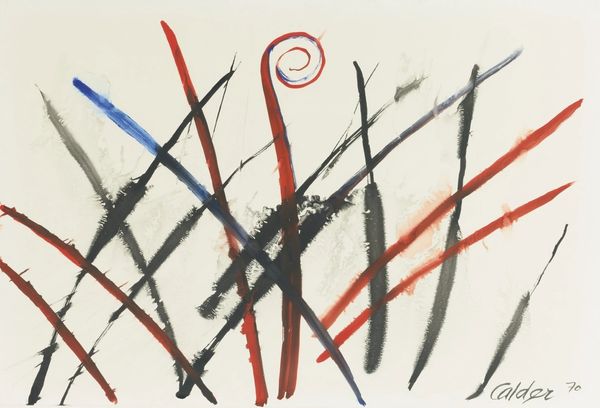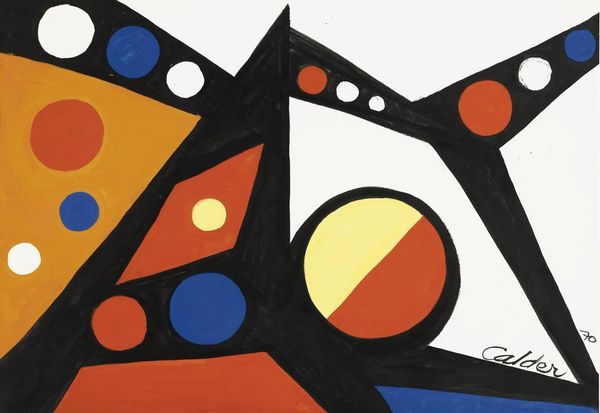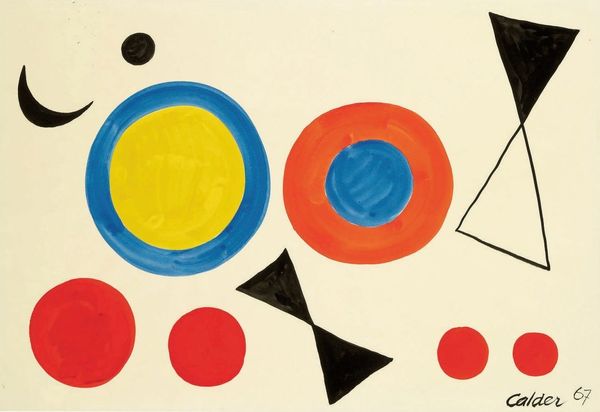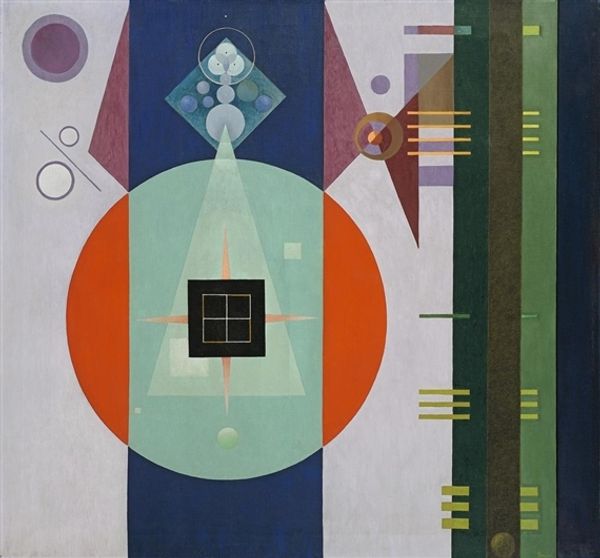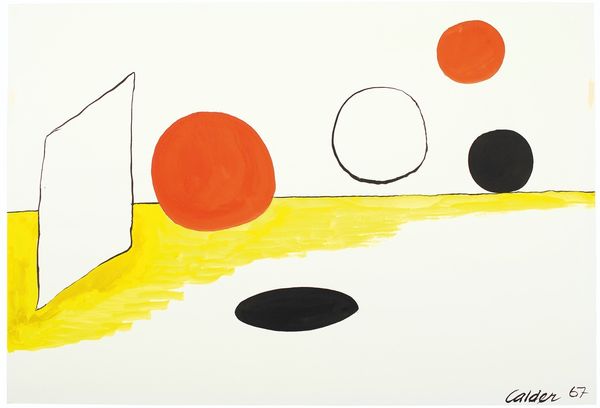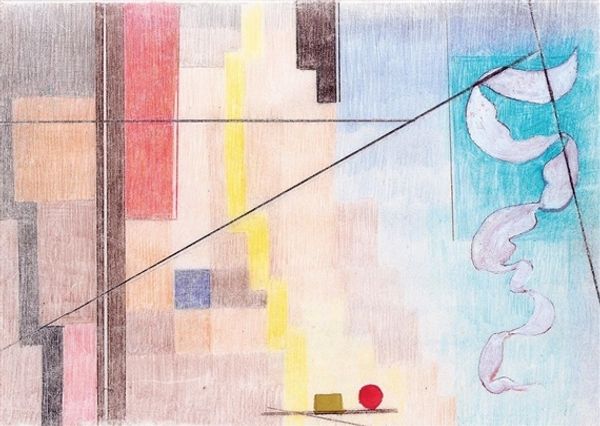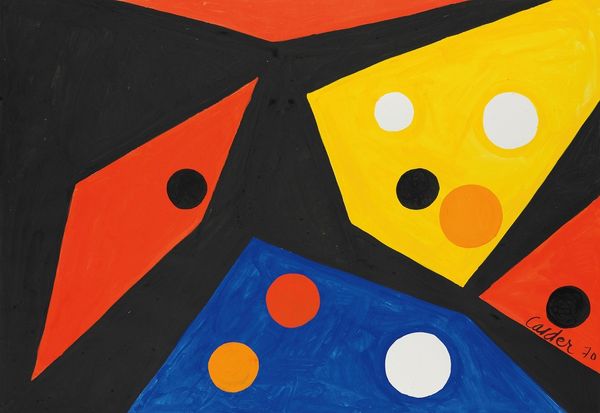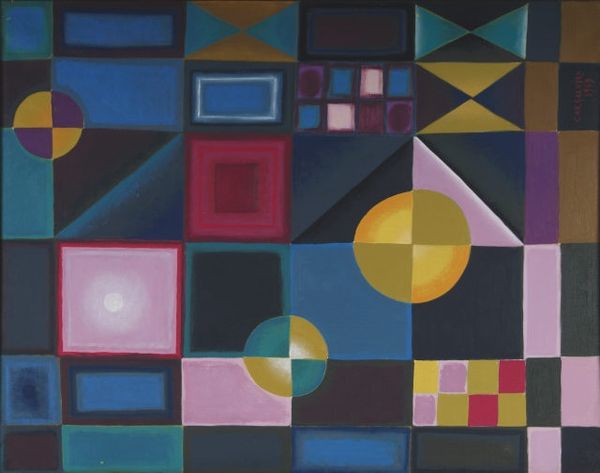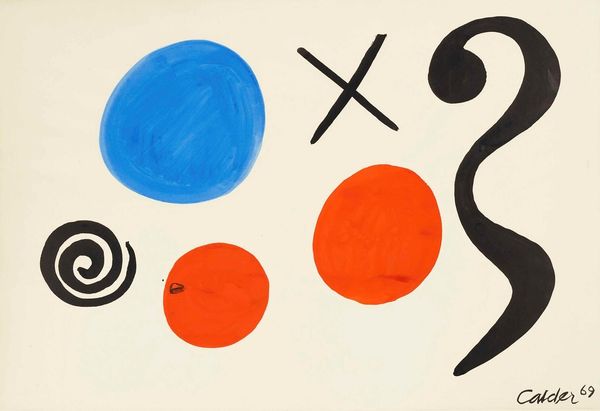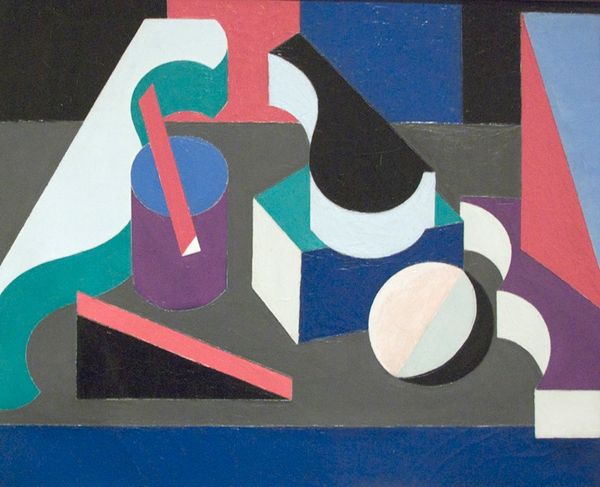
acrylic-paint
#
concrete-art
#
acrylic-paint
#
form
#
geometric-abstraction
#
abstraction
#
line
#
modernism
Copyright: Lolo Soldevilla,Fair Use
Editor: So, here we have an untitled work by Lolo Soldevilla, likely made with acrylic paint. It’s a geometric abstraction with circles, lines, and squares on a grey background. It strikes me as…almost cosmological, like a map of stars or atoms. What do you see in this piece? Curator: It's tempting to view it in isolation, appreciating the color relationships and formal arrangement. However, Soldevilla worked within a specific historical context: Cuba in the mid-20th century. Concrete art like this was a departure from previous academic styles. How do you think this type of abstraction functioned politically or socially during that period? Editor: Hmmm, well, it *is* non-representational. Maybe it's an escape from explicit political messaging that was mandated. It also feels like she could make an international statement. It kind of reminds me of some works by Kandinsky and Malevich, both Europeans. Curator: Exactly. Modernism, with its different "-isms," became an international visual language. After the revolution, artists like Soldevilla aimed to build a "new" society. Geometric abstraction resonated with a vision of industrial and social progress, something clean and structured, departing from its colonial past, thus helping in the Revolution's efforts of rewriting the Nation. How might the use of basic shapes contribute to this vision of social order? Editor: Okay, I see that. Circles and squares—there's a universality and balance. Was her work well-received within the Cuban art scene then? Curator: Initially, yes, fitting the revolutionary moment's aesthetic. Later, however, such formalism became subject to scrutiny. The emphasis shifted to more explicitly revolutionary, figurative art. Which makes these works of hers rarer and all the more relevant today in re-evaluating her legacy. Editor: That’s really interesting. I didn’t realize abstract art could be so tied to political movements. I’ll definitely think about context more when I look at abstract works. Curator: Precisely. Context can significantly enrich how we perceive non-representational works of art and encourage questions around social issues.
Comments
No comments
Be the first to comment and join the conversation on the ultimate creative platform.
